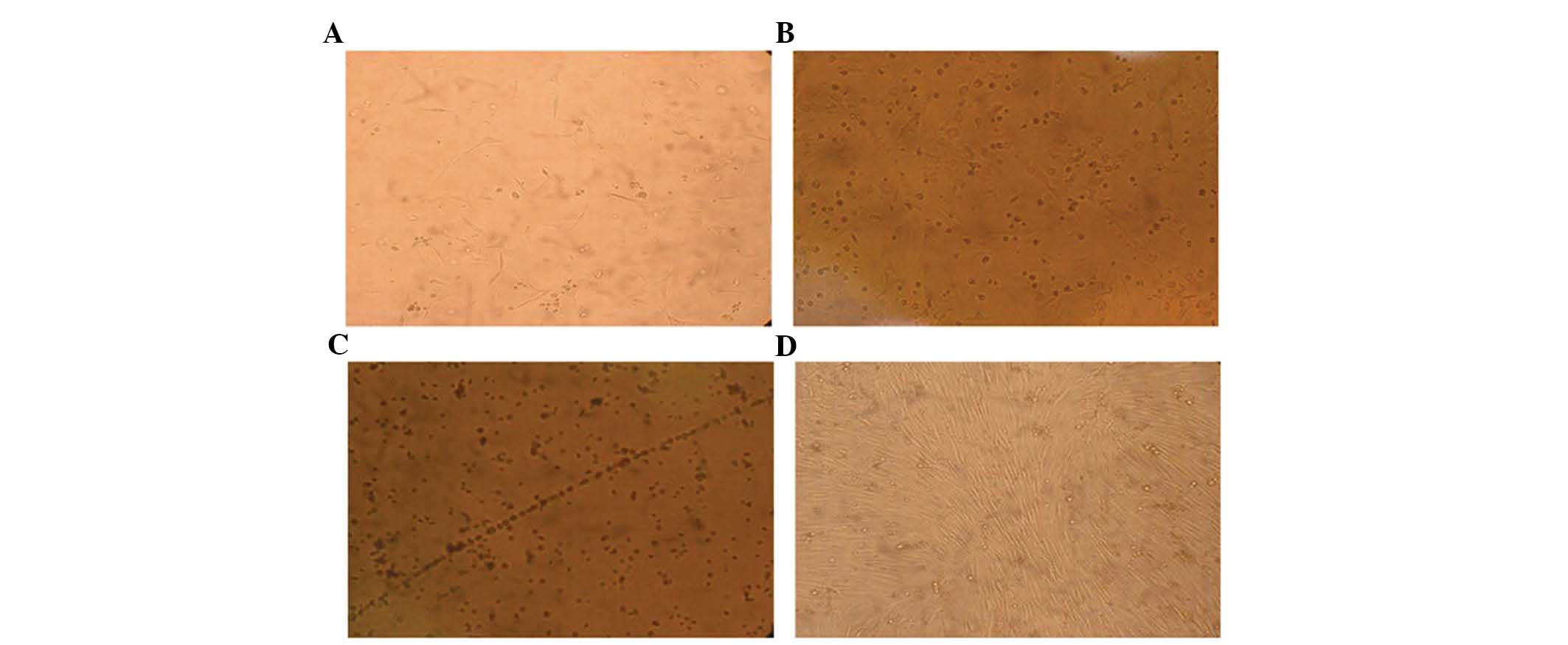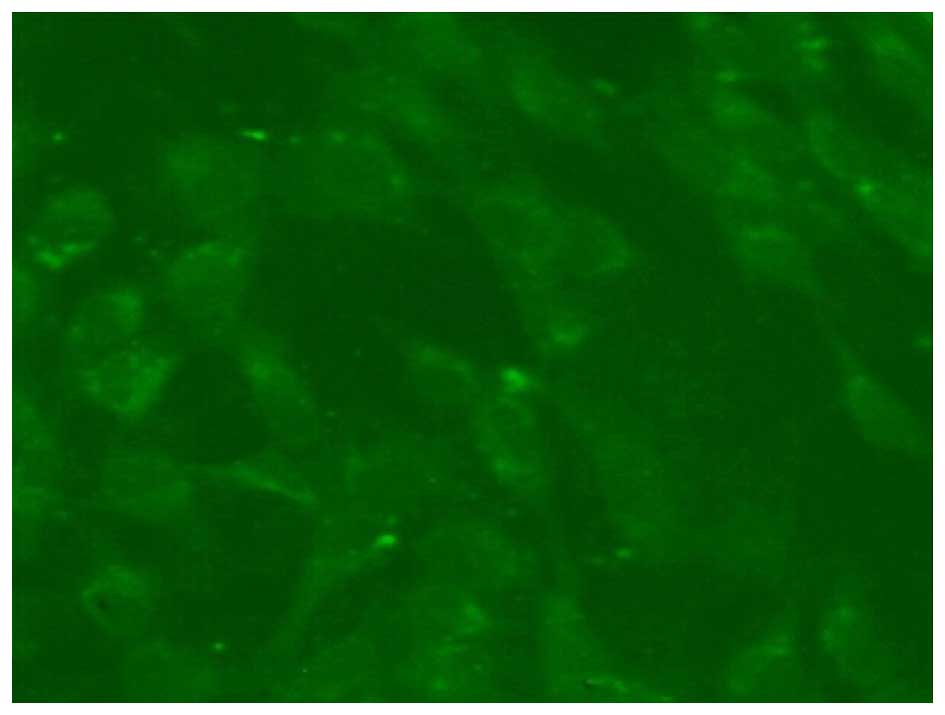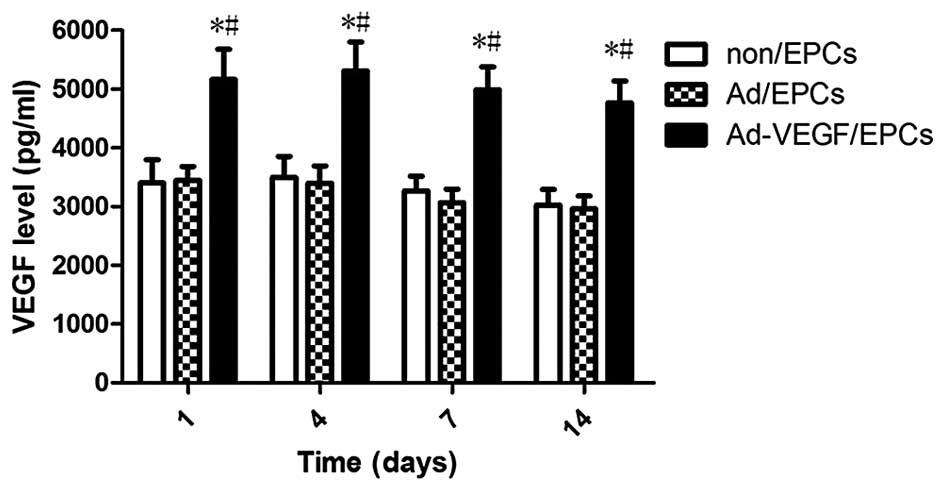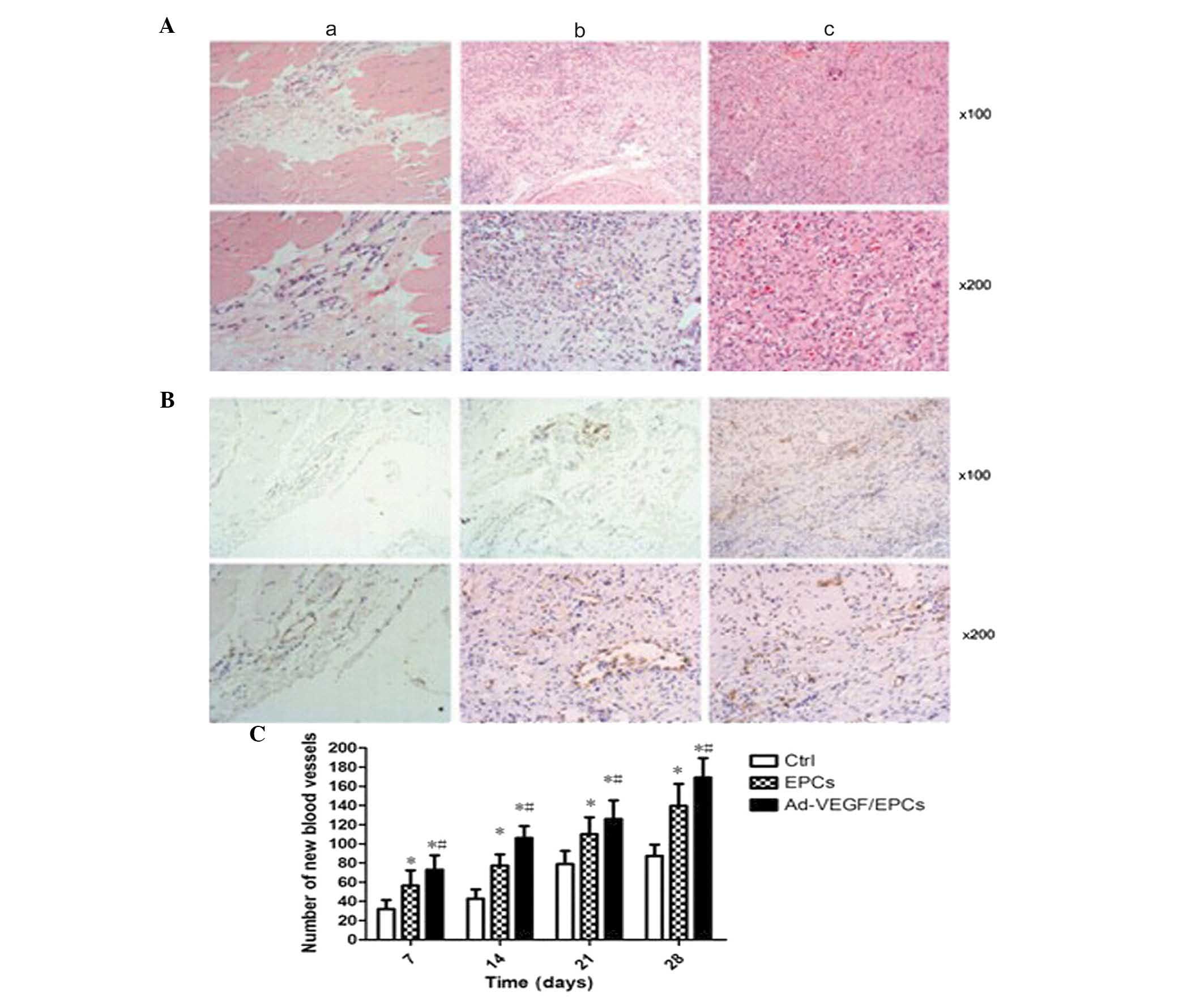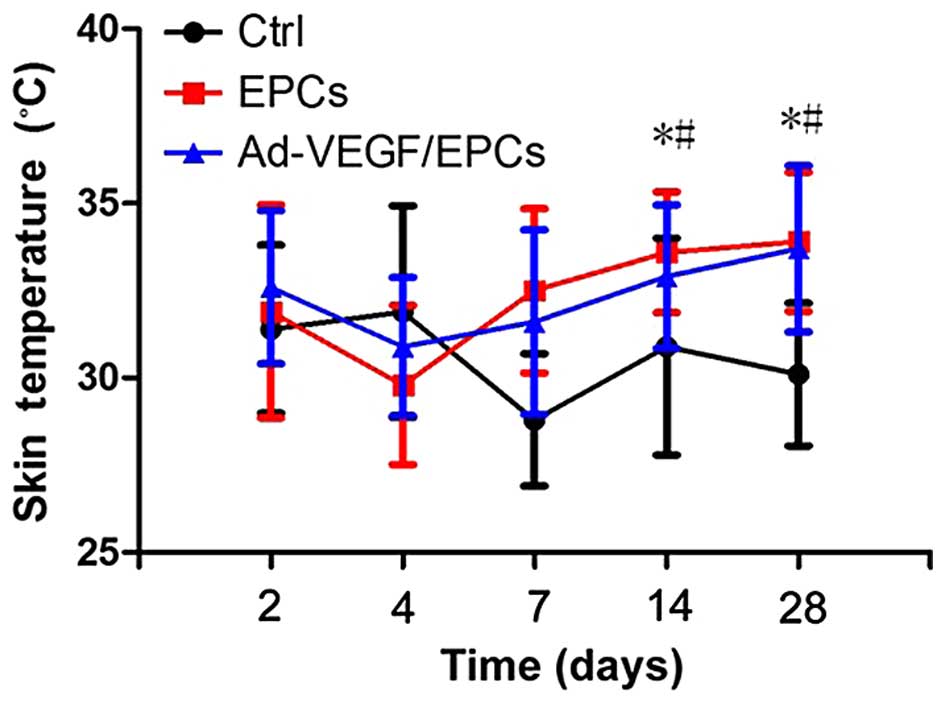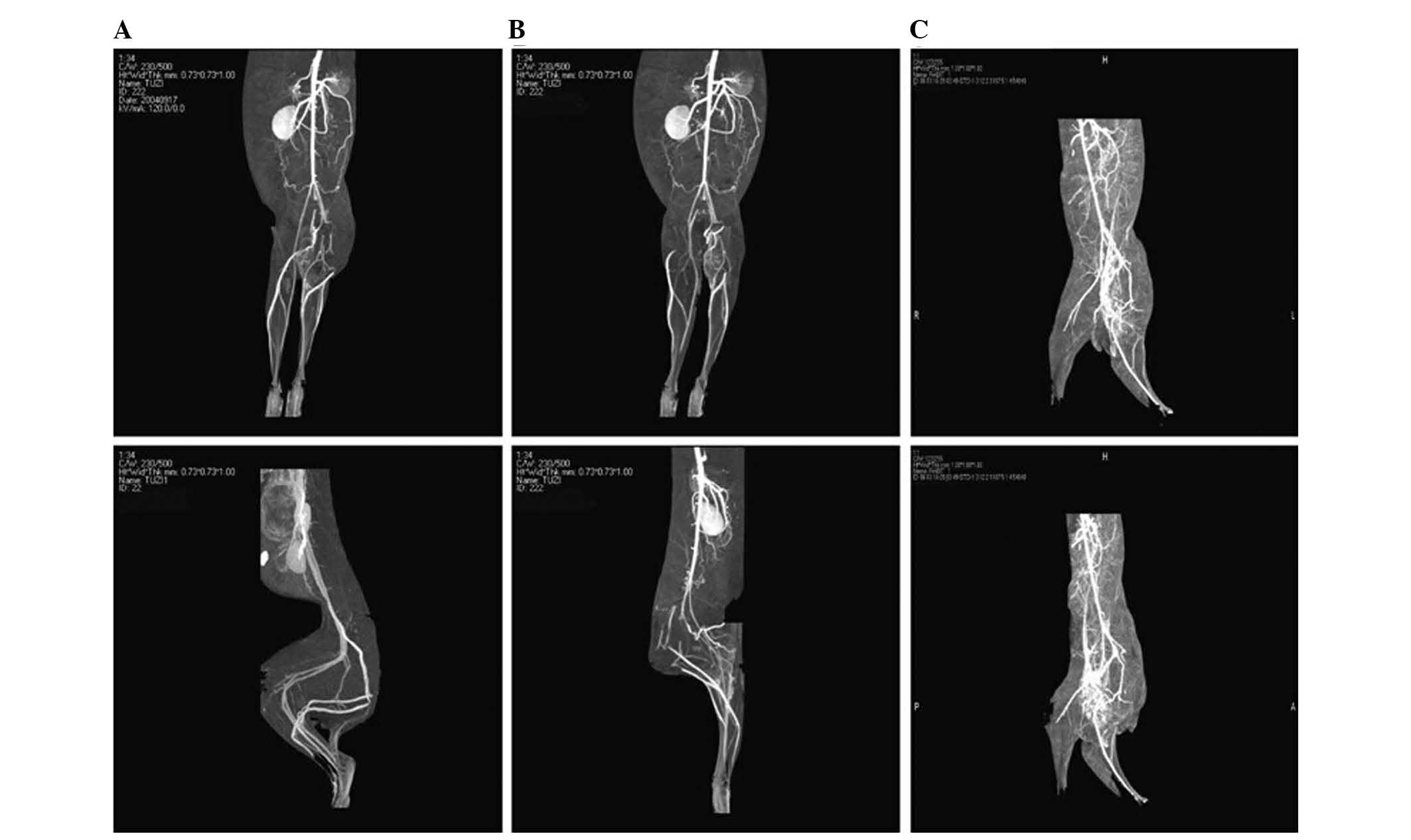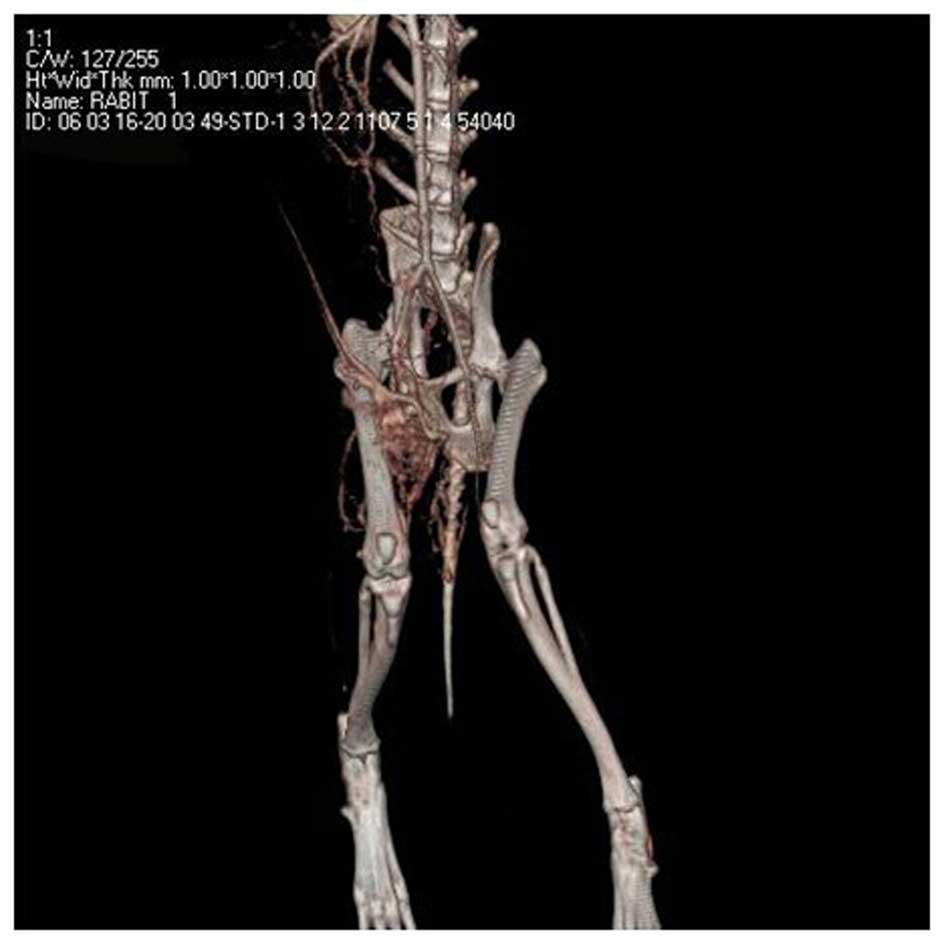Transplantation of vascular endothelial growth factor 165‑transfected endothelial progenitor cells for the treatment of limb ischemia
- Authors:
- Published online on: July 20, 2015 https://doi.org/10.3892/mmr.2015.4100
- Pages: 4967-4974
-
Copyright: © Wang et al. This is an open access article distributed under the terms of Creative Commons Attribution License.
Metrics: Total
Views: 0 (Spandidos Publications: | PMC Statistics: )
Total PDF Downloads: 0 (Spandidos Publications: | PMC Statistics: )
Abstract
The present study aimed to investigate the effects of neovascularization in rabbits with limb ischemia transplanted with vascular endothelial growth factor (VEGF)165‑transfected endothelial progenitor cells (EPC). Bone marrow mononuclear cells were isolated by gradient centrifugation, cultured in M199 culture medium and induced into EPCs using VEGF, basic fibroblast growth factor, and insulin‑like growth factor‑1, and subsequently identified. The EPCs were transfected with Adv‑green fluorescent protein‑VEGF165 and the proliferation potential of the cells was determined using an MTT assay. The protein expression levels of VEGF were measured by detecting its concentration levels in the supernatant using an ABC‑ELISA assay. A rabbit hind limb ischemic model was established and randomly divided into three groups: (A) Control group, (B) EPC‑transplanted group, and (C) Ad‑VEGF165/EPCs‑transplanted group. The effects of transplantation and the levels of recanalization were detected. Incorporation of the transplanted cells into the ischemic region was confirmed by 5‑bromodeoxyuridine staining, and the levels of recanalization were measured by computer tomography ateriography and immunohistochemical staining. Bone marrow‑derived EPCs were induced, cultivated, and successfully identified. The results of the present study determined the optimum transfection ratio that promoted the growth of EPCs. The EPCs were successfully transfected with VEGF165, and EPC proliferation was not affected by the transfection. The supernatant protein concentration levels of VEGF were markedly higher in the VEGF165‑transfected group, as compared with those of the control group. Introduction of the transplanted cells into the ischemic region of group C occurred more efficiently, as compared with groups A and B. The recanalization capillary density in group C was significantly higher, as compared with groups A and B. VEGF gene transfection was able to improve the quality of EPCs, and the response of rabbits with limb ischemia to transplantation with VEGF‑transfected EPCs was significantly better, as compared with transplantation with EPCs alone.



